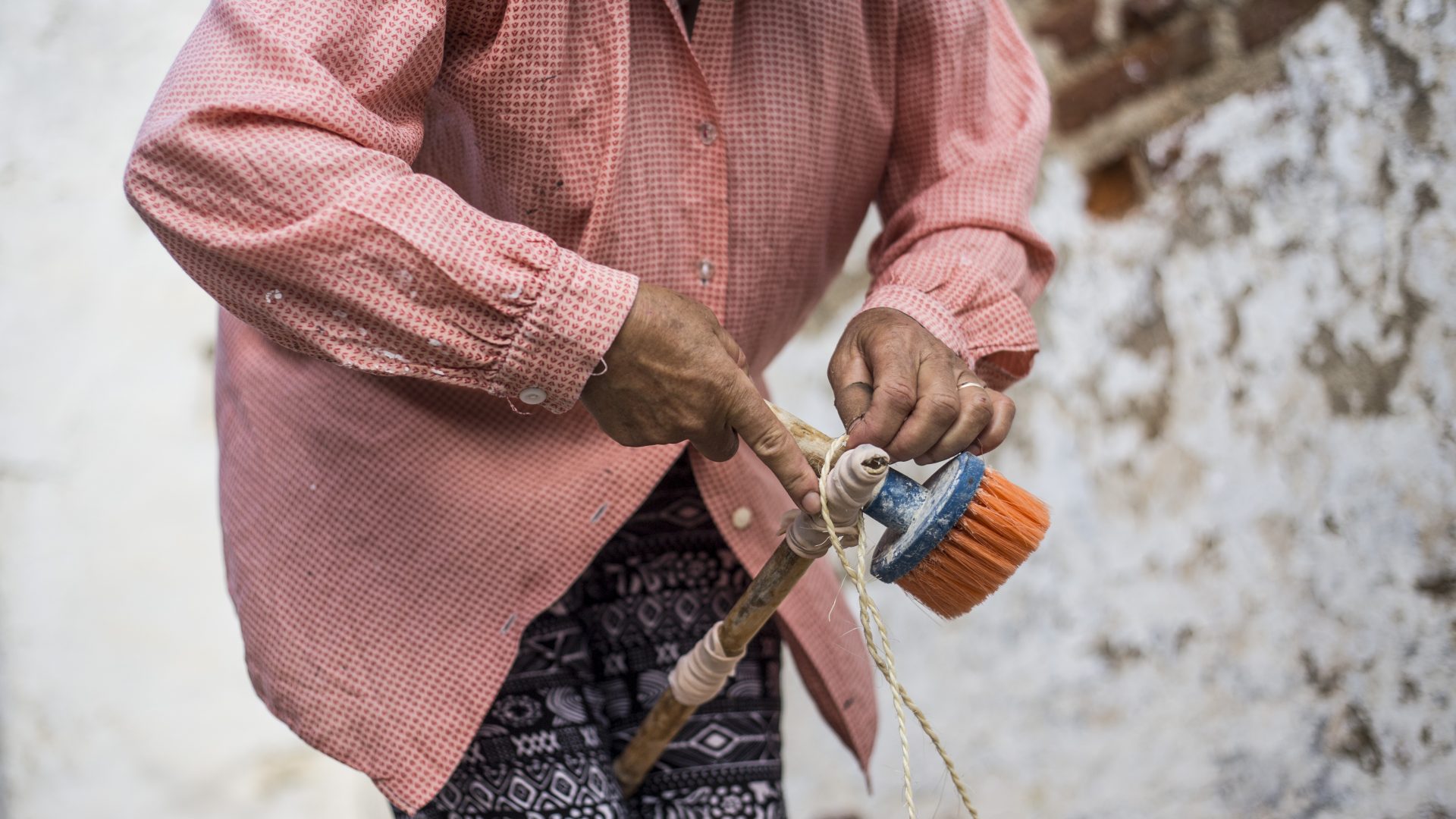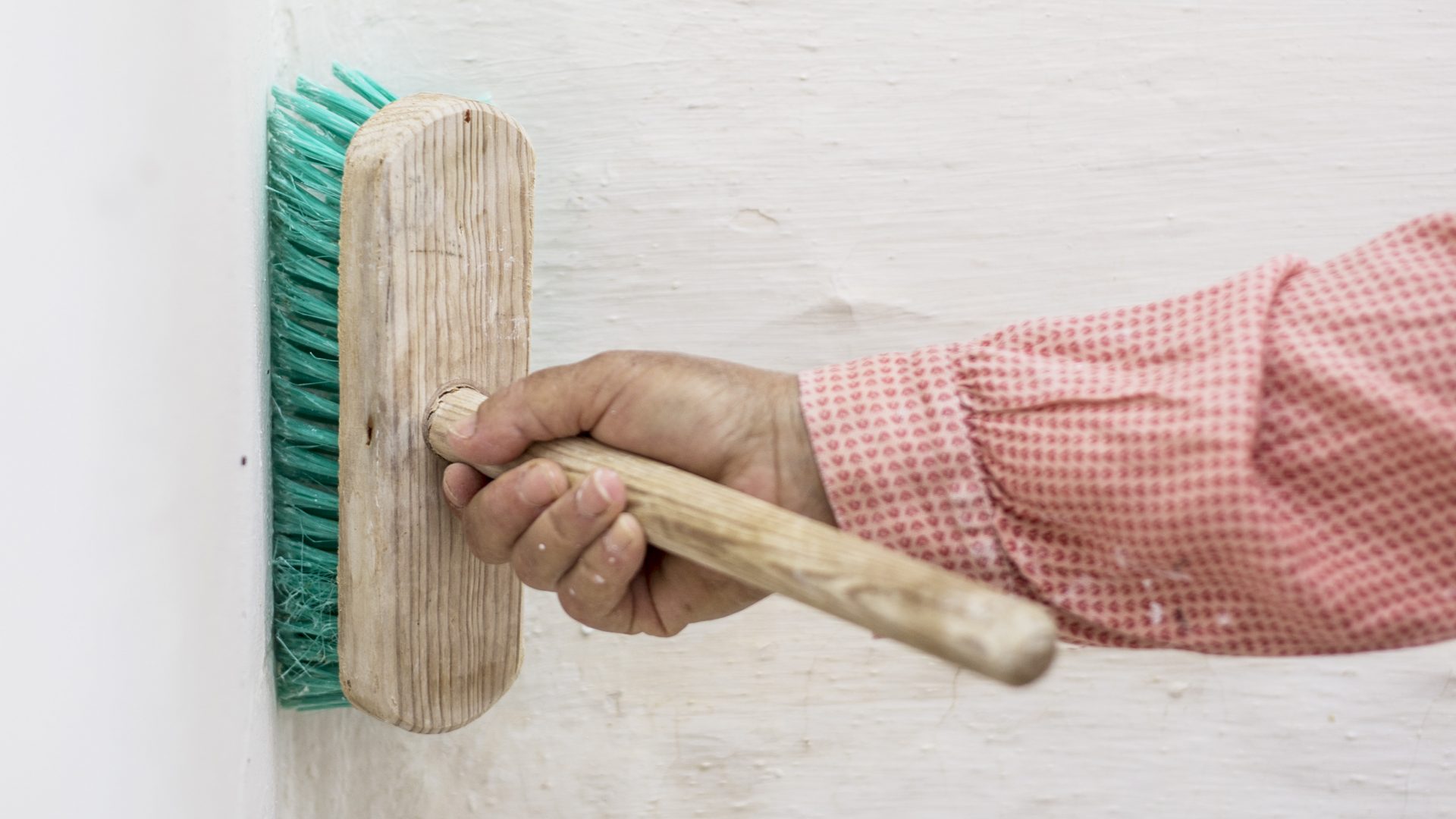We don’t need to go so far back to remember the day when Felismina Ramalho’s mother initiated her in communal whitewashing. «I was 12 years old. It was a task performed only by women and passed down from generation to generation. All my life, I remember my grandmothers, aunts and my mother doing this job.»

Water is one of the fundamental elements to mix limestone. «The lime comes in rocks and is melted in a bucket or can of cold water. We add rock by rock, because it will bubble and burn. We stir the lime to dissolve it well, otherwise it forms stones and sand on the bottom and can’t be used.»
48 hours later, it has turned into ‘lime milk’ and can be used to paint, with thick paint brushes and brooms distributed among the whitewashers. However, the “teacher” Felismina thinks the raw material should settle for longer.
Like many other Alentejo tasks, it is best to begin whitewashing at dawn.
White lime paints the Alentejo horizon and encourages ancient gestures to be repeated as a family. The Beja Municipality is preparing an application for the activity associated with artisanal lime kilns to be classified as an Intangible Cultural Heritage of Humanity.
Traditionally, it was men who cooked the lime and took it from the kilns to pass on to the women. Lime kiln tenders and whitewashers complemented each other. However, lime kilns fell into disuse and now only a handful of men master this technique.
—
*Moda do Entrudo, song by Zeca Afonso inspired by Cancioneiro Popular Português (Portuguese folk songbook)









